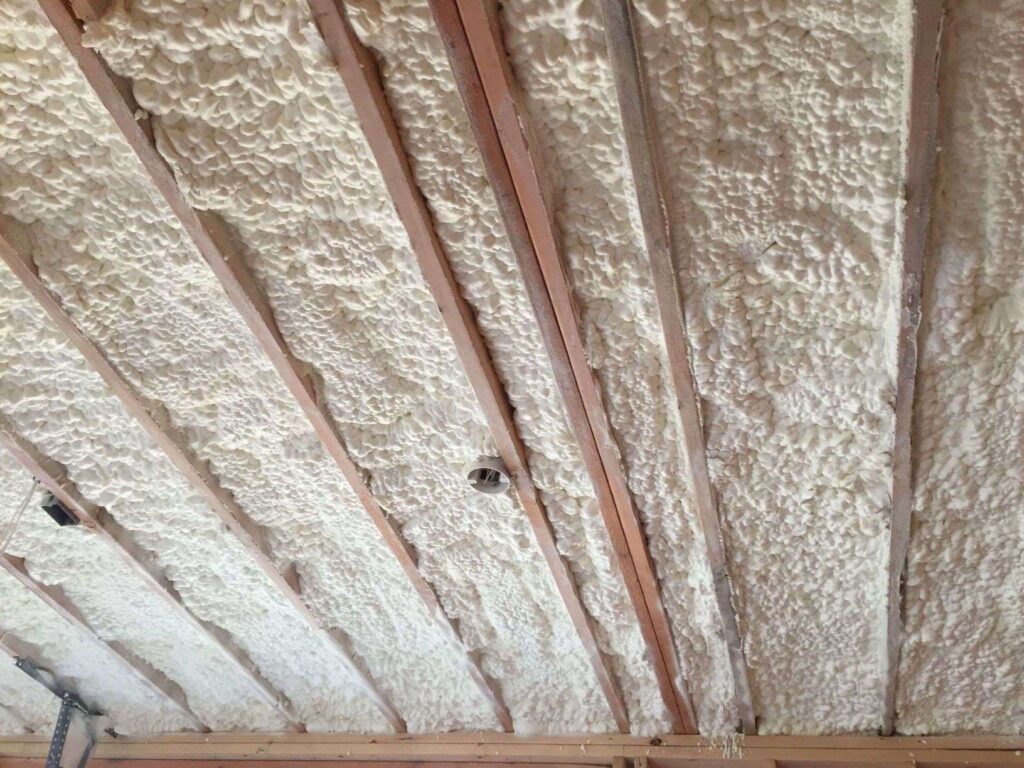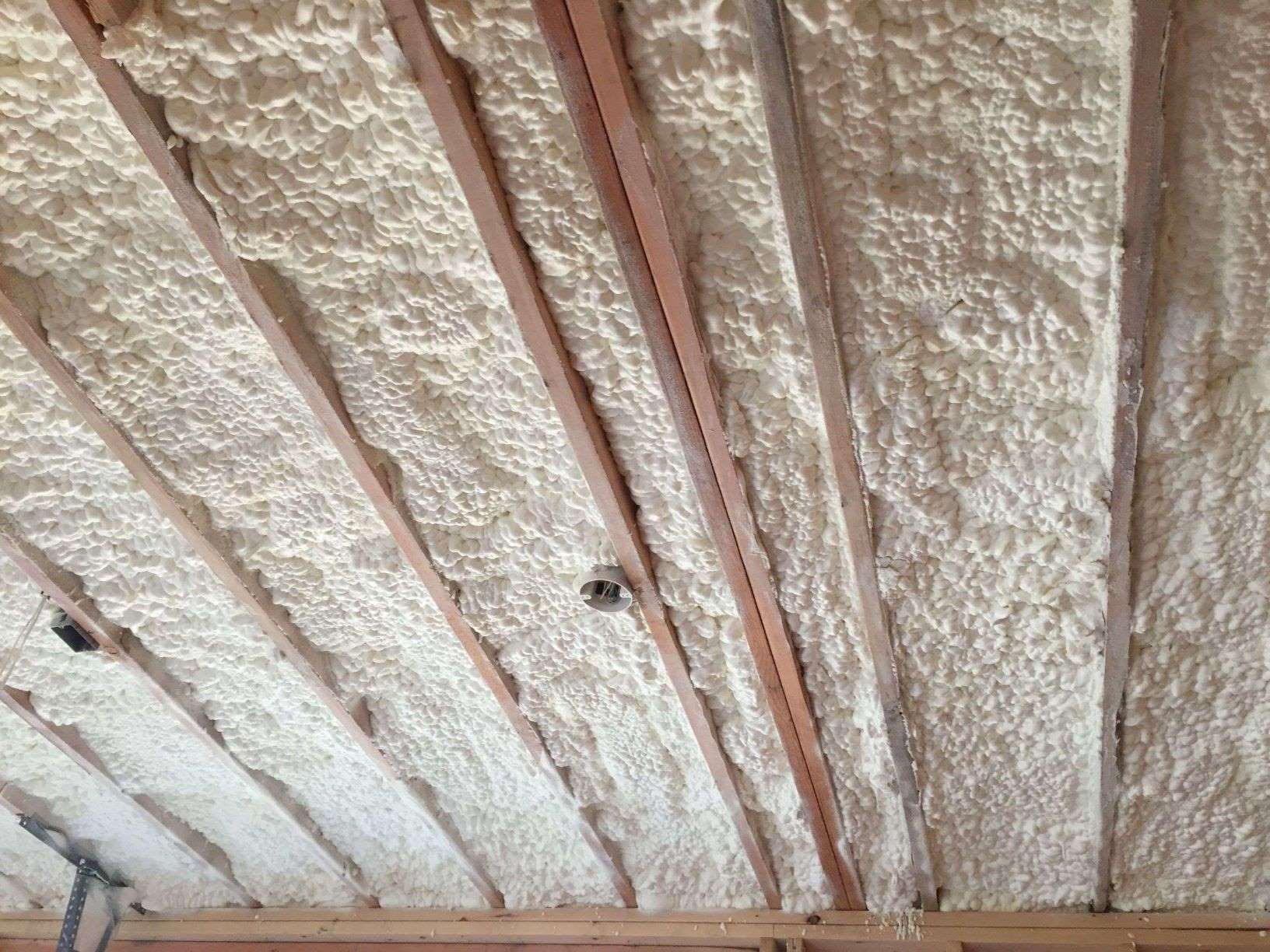
How Long Does Open-Cell Spray Foam Take to Dry? A Comprehensive Guide
Insulating your home is a significant investment, and choosing the right insulation material is crucial for energy efficiency, comfort, and long-term cost savings. Open-cell spray foam has gained popularity as a versatile insulation option, but understanding the drying time is essential for a successful application. This article delves into the factors influencing the drying process of open-cell spray foam, providing a comprehensive guide for homeowners and contractors alike. We will address the core question: how long does open-cell spray foam take to dry?
Proper drying is paramount to ensure optimal performance and prevent potential issues. Rushing the process can lead to problems such as incomplete curing, reduced insulation value, and even mold growth. This guide will equip you with the knowledge to navigate the drying process effectively, ensuring a successful and long-lasting insulation project.
Understanding Open-Cell Spray Foam
Before we explore the drying time, it’s crucial to understand the characteristics of open-cell spray foam. Unlike closed-cell foam, which has a rigid structure, open-cell foam is softer and more flexible. It’s characterized by its open cells, which allow air and moisture to pass through, contributing to its soundproofing qualities. This also means it has a lower density compared to closed-cell foam.
Open-cell foam is often favored for its cost-effectiveness and its ability to expand and fill irregular spaces, making it ideal for attics, walls, and crawl spaces. However, its moisture permeability also influences its drying time. The foam absorbs moisture, and therefore needs time to release it into the air.
Factors Influencing Drying Time
Several factors play a crucial role in determining how long it takes for open-cell spray foam to dry. Understanding these factors is essential for planning your project and ensuring a proper cure.
- Humidity Levels: High humidity significantly slows down the drying process. The air’s inability to absorb more moisture hinders the foam’s ability to release its moisture content. Ideally, the application area should have a relatively low humidity level.
- Temperature: Warmer temperatures generally accelerate the drying process. Higher temperatures promote faster evaporation. However, excessively high temperatures can lead to uneven curing.
- Ventilation: Adequate ventilation is critical. Proper airflow facilitates moisture removal. Good ventilation helps remove moisture-laden air and replace it with drier air, accelerating the drying process.
- Thickness of Application: Thicker applications take longer to dry. The deeper the foam, the more moisture it contains, and the longer it takes for that moisture to evaporate.
- Product Formulation: Different open-cell spray foam products have varying formulations. Some may dry faster than others due to their chemical composition. Always refer to the manufacturer’s instructions for specific drying times.
- Application Method: The skill and technique of the applicator can influence drying time. Even application ensures uniform curing, while uneven application can lead to slower drying in some areas.
Typical Drying Time for Open-Cell Spray Foam
So, how long does open-cell spray foam take to dry? The typical drying time for open-cell spray foam ranges from a few hours to a full day, but this can vary widely. Most manufacturers recommend a drying time of 8 to 24 hours before the area can be safely accessed or finished. However, it’s critical to remember that this is a general guideline.
For instance, in ideal conditions (low humidity, good ventilation, and moderate temperatures), a thin layer of open-cell spray foam may dry within a few hours. Conversely, in humid conditions with poor ventilation and a thick application, it could take up to 24 hours or even longer. Always consult the manufacturer’s specifications for the specific product used, as drying times can vary.
Signs of Proper Drying
How can you tell if your open-cell spray foam has dried properly? Several indicators can help you determine if the foam is ready for the next step. These include:
- Surface Touch: The surface should feel dry to the touch and no longer be tacky or sticky.
- Color Consistency: The foam should have a uniform color throughout. Any discoloration or unevenness could indicate incomplete curing.
- Odor: The strong chemical odor associated with freshly applied foam should dissipate. A lingering odor could suggest that the foam hasn’t fully cured.
- Manufacturer’s Recommendations: The best way to ensure proper drying is to follow the manufacturer’s guidelines, which often include specific drying times and recommended conditions.
Problems Associated with Premature Finishing
Rushing the finishing process can lead to several problems, underscoring the importance of allowing sufficient drying time. These problems include:
- Reduced Insulation Performance: Incomplete curing can compromise the foam’s insulating properties, leading to reduced energy efficiency.
- Moisture Trapping: Trapped moisture can cause mold and mildew growth, posing health risks and damaging the building structure.
- Adhesion Issues: Premature finishing can interfere with the adhesion of the foam to the substrate, leading to delamination or separation.
- Odor Problems: The lingering chemical odor may persist if the foam is not fully cured.
Therefore, patience is key when it comes to the drying process.
Best Practices for Drying Open-Cell Spray Foam
To ensure proper drying and a successful insulation project, consider these best practices:
- Proper Ventilation: Ensure adequate ventilation by opening windows, doors, or using fans to promote airflow.
- Control Humidity: Use a dehumidifier to reduce humidity levels, especially in humid climates.
- Maintain Temperature: Maintain a consistent and moderate temperature within the application area.
- Follow Manufacturer’s Instructions: Always adhere to the manufacturer’s specific recommendations for drying time and application conditions.
- Professional Application: Consider hiring a professional spray foam installer who has the expertise and equipment to ensure proper application and drying.
- Inspection: After the recommended drying time, inspect the foam for any signs of incomplete curing before proceeding with the finishing work.
Comparing Open-Cell and Closed-Cell Spray Foam Drying Times
Understanding the differences in drying times between open-cell and closed-cell spray foam is important. While both are excellent insulation options, their drying characteristics differ significantly. Closed-cell foam is generally denser and less permeable to moisture, which can lead to a faster curing process. However, the differences in drying times are not always a definitive factor in choosing between the two types of foam. The selection depends on the specific application, the desired performance characteristics, and the environmental conditions. For example, in areas with high moisture exposure, closed-cell foam may be preferred because of its moisture resistance.
Conclusion: The Importance of Patience
In conclusion, how long does open-cell spray foam take to dry? The drying time of open-cell spray foam depends on several factors, including humidity, temperature, ventilation, and the thickness of the application. While the typical drying time ranges from a few hours to a full day, it’s crucial to follow the manufacturer’s instructions and ensure proper ventilation to allow the foam to fully cure. Premature finishing can lead to performance issues and potential problems like mold growth.
By understanding the factors that influence drying time and following best practices, you can ensure a successful and long-lasting insulation project. The key takeaway is patience. Allowing sufficient drying time is a small price to pay for the benefits of a properly insulated home. This guide provides a comprehensive overview of the drying process, empowering you to make informed decisions and achieve optimal results. Remember that the drying time is a crucial step in the process, and rushing it can lead to costly problems down the road.
Investing time in understanding the drying process of open-cell spray foam guarantees the durability and effectiveness of your insulation, leading to a more comfortable, energy-efficient, and healthy home. By considering the factors discussed, you can confidently assess whether your foam has dried properly before proceeding with the next stages of your project.
[See also: How to Choose the Right Insulation for Your Home]
[See also: Open-Cell vs. Closed-Cell Spray Foam: Which is Right for You?]
[See also: DIY Spray Foam Application: Is It Worth It?]


